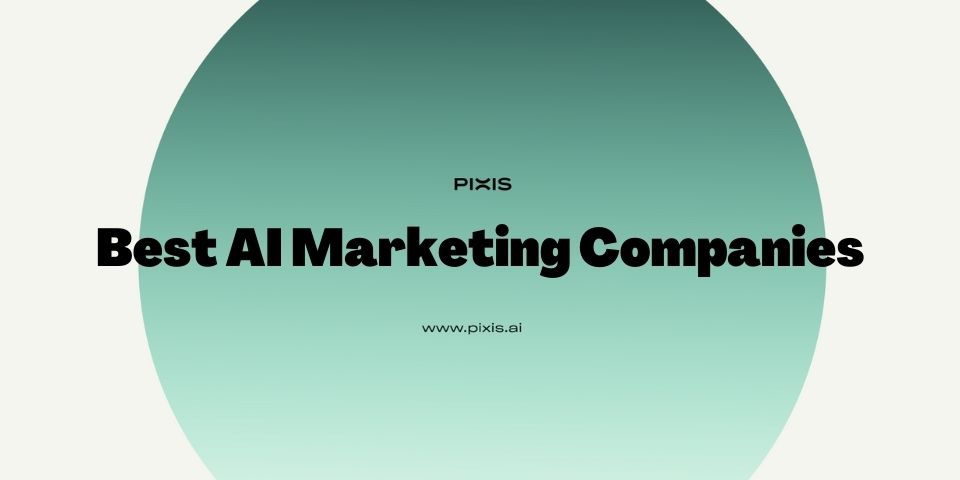Channel Optimization: A Guide to Doing It Right
Every marketing channel, whether it’s Facebook, blogs, email, paid ads, or organic search, has its own set of rules, best practices, and quirks. Optimizing these channels is about understanding their quirks in the context of your goals, whether you’re aiming for views, clicks, engagement, or conversions.
By the end of this article, you’ll learn about channel optimization techniques that include segmenting your audience and using AI for smarter ad targeting. We’ll cover practical, proven techniques to help you get the most out of every marketing dollar.
What is Channel Optimization?
Channel optimization is the process of analyzing, refining, and improving marketing channels to maximize performance and ROI. It involves evaluating which channels deliver the best results and strategically allocating resources toward those that most effectively reach your target audience and drive desired outcomes.
Rather than spreading your marketing efforts across numerous channels, this approach helps you identify which platforms and methods yield the highest engagement, conversions, and ultimately, revenue.
Single-Channel vs. Cross-Channel Optimization
Single-channel optimization has its limitations. For example, when you optimize each channel in isolation, you may miss important insights about how customers interact with your brand across multiple touchpoints. This siloed approach can lead to:
- Duplicate targeting of the same customers across different platforms
- Inconsistent messaging that confuses potential customers
- Difficulty in understanding which channels truly influence conversions
- Inefficient budget allocation
On the other hand, when you implement a cross-platform marketing strategy, you can track customer journeys more effectively.
Key Metrics to Track in Channel Optimization
You can’t improve what you don’t measure. While there are numerous metrics you can track for channel optimization, focusing on those that align with your specific business goals will yield the most actionable insights:
1. Awareness and Reach
These metrics help you understand how visible your brand is and how well you’re capturing attention:
- Impressions and reach – How many people are seeing your content or ads.
- CPM – “Cost per mille,” CPM refers to the total ad spend for every 1,000 impressions an ad receives.
- Branded search volume – Are more people looking for your brand by name over time?
- Share of voice – How your visibility compares to competitors across channels.
- Social engagement rate – Not just likes and shares, but engagement as a % of reach.
2. Engagement and Interest
Once you’ve captured attention, these show how deeply your audience is interacting with your brand:
- Click-through rate (CTR) – How effective your creative or messaging is at driving action.
- Video view completion rate – Especially useful for platforms like YouTube, TikTok, and Instagram.
- Time on site / pages per session – Helps gauge content quality and user intent.
- Add-to-cart rate – Useful for ecommerce teams tracking product interest.
3. Conversion and Revenue
These are the KPIs that tie directly to business outcomes:
- Conversion rate – The % of users who complete a key action (purchase, signup, etc.)
- Average order value (AOV) – Helps you assess customer spend per transaction.
- Customer acquisition cost (CAC) – How much it costs to bring in each new customer. If this number is too high, explore different strategies to reduce CAC.
- Marketing ROI / ROAS – How much revenue was generated vs. what you spent on advertising to generate it.
- Revenue attribution – Understand which channels or campaigns actually drive purchases.
4. Retention and Loyalty
Getting customers is just the beginning. These metrics tell you how well you’re keeping them:
- Customer lifetime value (LTV) – The long-term value of each customer.
- Repeat purchaser rate – What % of your customers come back to buy again.
- Churn rate – The % of customers who stop buying over a period of time.
- Email/SMS unsubscribe rate – A fast indicator of messaging fatigue or irrelevance.
5. Customer Sentiment and Advocacy
These show how people feel about your brand and whether they’d recommend it:
- Net Promoter Score (NPS) – How likely are customers to refer you to others?
- Brand sentiment – Track positive vs. negative mentions in social and reviews.
- Product reviews and ratings – What customers are saying (and how often).
- Customer support feedback – Issues raised here can reveal friction points in your experience.
How to Optimize Your Marketing Channels
Here’s a step-by-step breakdown of how to implement channel optimization:
1. Know Your Audience
You can’t optimize channels if you don’t deeply understand who you’re trying to reach. That means going beyond age and gender. You need to know how your customers make decisions, what influences them, and where they spend their time online.
Start by mapping their journey. Use tools like Google Analytics to see where traffic is coming from and what actions people take before buying. Look at search queries in your Google Search Console to understand what problems they’re trying to solve. Dig into product reviews or send out a short post-purchase survey to find out why people chose you over a competitor.
Use that information to group your customers into real segments. Not just “women 25–34,” but “new moms researching clean skincare” or “repeat buyers who respond to SMS promos.” You can also implement an AI targeting tool to make your segments even more impactful.
When you understand how each group thinks and shops, you’ll know which channels to focus on and how to speak to them.
2. Evaluate Channel Performance Without Overcomplicating It
A lot of marketers either overanalyze or ignore performance data. The sweet spot is setting up a simple, repeatable process that tells you what’s actually working.
Once a week or once a month, pull basic reports from each major channel: email, paid ads, organic social, and your site. Look at metrics that map to your goal. If you’re focused on growth, check customer acquisition cost, conversion rate, and return on ad spend. For loyalty, look at repeat purchase rate and email click-throughs.
Use a spreadsheet or dashboard tool (like Looker Studio or Databox) to compare performance over time. If a channel is trending down and you haven’t changed anything, it’s probably time to pause and test a new strategy or shift spend elsewhere.
Also, look at assisted conversions in Google Analytics to understand if a channel isn’t converting directly but is helping close sales in combination with others.
3. Allocate Budget Based on What Moves the Needle
After you’ve evaluated performance, shift budget toward the channels that are bringing in high-value customers at a healthy cost.
If you’re running Meta and Google Ads, and Meta has a lower cost per acquisition with a higher average order value, consider moving 10–20% of your Google spend over to Meta for the next two weeks. Test, compare, and adjust again.
Learn more: What are the ad formats on Reddit?
Use automation tools like Google Ads Smart Bidding or Meta Advantage+ campaigns, but don’t just set and forget. These tools are only as smart as the data you feed them. Feed them clean, conversion-rich signals and monitor the results closely.
There are also AI bidding and budgeting tools you can use to control costs without hurting your performance.
And if you’re not sure how much to spend overall, a good rule of thumb for growth-focused DTC brands is to invest 10–15% of your revenue into marketing, with room to flex based on goals and seasonality.
4. Use Analytics to Make Better Decisions and Prove Your Impact
Use marketing attribution tools like Triple Whale or even GA4 to see which campaigns are bringing in the most revenue.
Start with basic questions:
- Which channels bring in first-time customers?
- Which ones drive the most profitable repeat sales?
- What’s the ROI of each campaign over the last 30 days?
From there, calculate ROI for each channel or campaign. Subtract the cost from the revenue it brought in, and divide by the cost to get a percentage. Share that number with your team and leadership. Don’t just say “this campaign got 1M impressions.” Say “this campaign brought in $15K in revenue at a 4x return.”
5. Test and Tweak What Matters
Testing isn’t just for big brands. Even a small team can run smart experiments.
Pick one thing to test at a time: a new headline, a product image, a CTA, or a landing page layout. In Meta Ads Manager or your email platform, set up A/B tests with a clear goal—like increasing clicks or lowering CPA.
Let the test run long enough to get meaningful results, then roll out the winner. Don’t test just to test. Use your data to form a simple hypothesis, like “Adding social proof to the homepage will reduce bounce rate.” Then measure exactly that.
6. Build a Lean Tech Stack That Works for You
You don’t need a dozen tools. Just the right ones that help you see, act, and improve.
At minimum, use:
- A CRM like Klaviyo or HubSpot to manage customer data and automate communication
- An analytics tool that shows attribution and performance trends (Triple Whale, GA4, or your ad platforms)
- An A/B testing tool (most ad platforms and email providers have this built in)
- Retargeting capabilities on paid channels to re-engage visitors who didn’t convert
Many fast-growing brands across industries are also starting to use AI to improve ad performance.
7. Make the Experience Feel Seamless, Everywhere
Customers don’t care what channel they’re on. They just want a consistent, helpful experience.
Make sure your brand looks, sounds, and feels the same whether someone finds you on TikTok, gets an email, or visits your site. That doesn’t mean saying the exact same thing everywhere, it means adapting your message while keeping the vibe consistent.
Also, let people choose how they want to hear from you. Some customers prefer SMS, others want emails, and some want to follow quietly on Instagram. Give them options. Then respect their preferences.
At the same time, make sure your internal systems are talking to each other. If someone abandons a cart, your email platform should know. If a customer buys something via social, your CRM should update.
Common Challenges in Channel Optimization
Even with the best tools and a strong strategy, channel optimization can get challenging. Here are some of the biggest roadblocks B2C marketers run into and how to work through them.
Too Much Data, Not Enough Clarity
With every platform throwing metrics at you, it’s easy to get buried in dashboards. The problem isn’t a lack of data, but it’s knowing which numbers actually matter.
Focus on the metrics tied to your goals. If you’re running a conversion campaign, don’t get distracted by vanity metrics like likes or impressions. Instead, zero in on cost per acquisition, conversion rate, and return on ad spend.
Attribution is another tricky piece. Most buyer journeys involve multiple steps before someone finally buys. Relying only on last-click attribution skews the data and undervalues earlier touchpoints. Use tools that offer blended or data-driven attribution models so you get a more accurate picture of what’s really working.
Creating a Budgeting Strategy
One of the hardest parts of optimization is knowing where to put your money.
If you’re seeing strong performance on paid social but your email list is underperforming, consider shifting some of your creative or tech budget to strengthen your lifecycle marketing. Review performance regularly, and be ready to reallocate quickly based on what’s delivering, not just what was planned.
The key is staying flexible. Set your high-level budget, but leave some room to test and shift based on real-time performance.
Keeping Up with Privacy and Tech Shifts
Privacy regulations like GDPR and iOS tracking changes have made it harder to rely on third-party data and that’s actually a good thing in the long run. But it does mean you need to double down on collecting first-party data the right way.
Use tools like preference centers, post-purchase surveys, or gated content to gather insights directly from your customers. Make it clear what you’re collecting and why. The more value you provide in exchange (think personalized offers or early access), the more data customers are willing to share.
If you’re not already investing in a consent management tool or rethinking your cookie strategy, now’s the time.
Getting All Your Channels (and Teams) to Work Together
One of the trickiest parts of optimization is making everything and everyone work in sync. Your paid team might be running great campaigns, but if your email strategy is siloed or your creative doesn’t reflect what customers saw on social, it creates a fractured experience.
Start by aligning your marketing efforts to clear business goals. That means looping in leadership, sales, product, not just your media team. Regular check-ins, shared dashboards, and one source of truth for reporting go a long way toward keeping everyone rowing in the same direction.
Channel integration also requires tech integration. If your platforms don’t talk to each other, your customers will feel it. Make sure your CRM, ad platforms, email tools, analytics, and any AI digital advertising platforms are connected and feeding data back to the same place.
Make Channel Optimization Easier with Pixis
At the end of the day, channel optimization is about making real connections with your audience and turning those connections into lasting customer relationships. When you focus on the right channels and use smart tools to refine your strategy, every marketing dollar works harder for you.
You can optimize your channels more easily with Pixis’ Advance. This powerful tool can orchestrate intelligent decision making across marketing channels with an AI infrastructure that learns contextually from historical campaign data, seasonality-based trends, attribution, analytics and live performance data. And on top of that, it continuously adjusts your strategies in real-time.
Book a demo today and see the difference Pixis AI can make.







